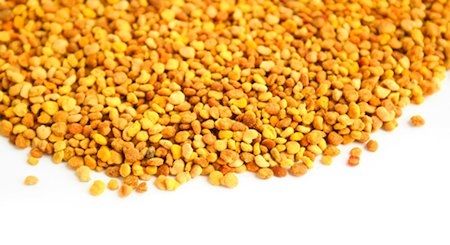

The Grupo de Investigación Reconocido (GIR) Applied Separation and Analysis Techniques (ASAT) of Universidad de Valladolid (UVA), in collaboration with the Regional Apicultural Center of Marchamalo, a center registered with the Junta de Comunidades of Castilla-La Mancha, has found residues of resveratrol in commercial samples of pollen from melipheral bees, according to an article published in the scientific journal “Food Analytical Methods”. Resveratrol is a chemical substance (a phenolic component of the stilbene family) found naturally in grapevines, particularly in black grapes and their derivative products (red wine and mosto). It is also found in nuts, peanuts, or cranberries. Resveratrol is of great interest due to its potentially beneficial effects on human health: it is an antioxidant, anti-carcinogenic, and could potentially control arterosclerosis, arthritis, and cardio-vascular diseases. Moreover, bee’s pollen is currently one of the most popular food supplements. Bees take pollen from flowers and transport it to their hives with the help of small “baskets” they have on their back legs. A “treasure”, this pollen is also a natural food “treasure” due to the several nutritive substances found in it. Pollen is considered an “absolutely complete” food product because it contains the 22 essential amino-acids required by the human body. As stated by Dr. José Bernal del Nozal, one of the researchers at ASAT who participated in the study, taking into account that resveratrol is present in several plants whose pollen might potentially be transported by bees, could bee’s pollen also contain resveratrol? “In order to prove this hypothesis, we analyzed samples of six commercial brands of bee’s pollen, all of which can be found in any supermarket. We found traces of trans-resveratrol in five of them, and traces of cis-piceido in one.” Although the quantities of trans-resveratrol varied in each sample, some commercial pollens had close to one milligram per kilo. This is a “relatively high” amount, not expected by the researchers. The scientific team developed a method of analysis based on chromatography of liquids, combined with a spectrometry of masses (a simple cuadrupolous analyzer with an electrospray ionization source) capable of identifying the four compounds in less than 35 minutes. Resveratrol presents two isometers (cis and trans), which are compounds with the same molecular formula, but presenting in different chemical structures, and therefore have different attributes. Of the two isometers, it is the trans-resveratrol that is found in commercial bee’s pollen, and this is the one that have a higher biological activity. Additionally, due to degradation processes, resveratrol can be transformed in other compounds called piceidos, cis and trans, respectively. The analytic method designed by the research group is one of the most relevant aspects of this study, because no method for the analysis of these compounds in bee’s pollen had ever been published. The method allows the effective and simple quantification of the four compounds. “No traces of trans-piceido were found in the analyzed commercial samples. We only found cis-piceido in one of the samples, and in low concentration. Notwithstanding, these compounds present a lower biological activity than trans-resveratrol,” added Bernal del Nozal. In the apicultural area, the GIR has been working for years, not only to determine the main attributes of Spanish mono-floral honeys, but also to evaluate the residues of chimo-therapeutical treatments with honey and other apicultural products, as well as studying alternative treatments for several diseases with bees. The researchers are currently focused on finding natural compounds that show activity against certain diseases of bees, as well as the study of the presence of insecticides of the last generation, and their possible relationship with the disappearance of melipheral bees.